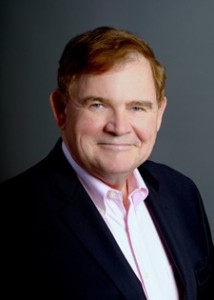 In our previous blog post, we introduced the concept that it’s hard to know where you are going if you
In our previous blog post, we introduced the concept that it’s hard to know where you are going if you don’t know where you are, and that a number of key statistics about your congregation can go a long way in helping leaders understand where they are, where they are going, and what they need to prioritize in communicating with the congregation.
don’t know where you are, and that a number of key statistics about your congregation can go a long way in helping leaders understand where they are, where they are going, and what they need to prioritize in communicating with the congregation.
There are statistics that I believe leaders should know if they are to understand their congregations; 17 data points and 1 more to ignore. As we noted in the previous blog posting, almost every congregation has the first 10 of these data points readily accessible. Not enough leaders and members consult them sometimes, but they are easy to generate. The next 7 take a little effort to generate, but the returns can be impressive for congregations of just about every size. And one more data point often mentioned should, in fact, fall by the wayside.
Here again is that list of 18 data points. We elaborated earlier on the first nine; now let’s develop the second half of the list. It’s a bit of a long post to complete the list, but it’s worth the time and consideration.
- Membership
- Sunday Attendance, RE Attendance (Adult and children’s RE)
- Percentage of Budget Provided by Pledges
- “Average Cost per Household” to run your church
- Percentage of Members Pledging, if your bylaws do not ask a pledge of all members
- Mean and Median Pledge
- Number of Pledge/Contribution Waivers
- Percentage of Households/Members that are not Pledging
- Percentage of Pledging Friends
- Pledges that have not Increased or have Decreased over the past 2 years: Not everyone will or can increase a commitment every year, but looking for patterns of stagnation or reduction is prudent, and facilitates shaping more relevant and focused communications with those members. Sometimes this profile emerges because of other problems or issues – sometimes its just because no one asked them to consider an increase this year.
- Number of Pledging Units Self-Declared as Fair Share Donors: If the stewardship and leadership teams are not making wide use of the UUA’s Suggested Fair Share Giving Guide, a valuable tool to help members and friends think about their commitments is going unused. The pledge form should specifically ask if this commitment is Fair Share, the numbers tracked, and the Fair Share Givers recognized and celebrated. For more on the guide, see: https://stewardshipforus.com/stewardship-resources/suggested-fair-share-contribution-guide/
- The Quartile Distribution: This analysis and data set depicts how giving is distributed among the congregation, and how vulnerable the congregation may be to disruptions if a few larger donors change. There are always fewer large donors and more small donors, but how much of a spread exists between those groups is important. For a further discussion, see our blog at:
https://stewardshipforus.com/quartile-analysis-a-great-tool-you-never-knew-you-had/ - New Pledgers (first 2 years): Know the number of and by name households of new pledgers and ensure they receive specific appreciation and encouragement, especially in their first two years. Be aware also of the mean and median of these new pledges. Congregations that are clear about pledging up front tend to find new pledge rates very closely match more established pledger rates. Those that are less clear usually do not enjoy this result.
- Families Active in RE and Their Distribution Among Pledges and COR Populations: Why RE families in particular? They are often young families, with less to contribute. True, but they also represent the future of our movement and of your congregation; ensuring they understand the importance of a financial commitment, consistent with their means, is an important part of being a part of the congregation builds lifetime habits early and helps everyone understand we are not owners, but stewards – we are called upon to support what we have been given and to pass it on in good shape to those that follow us.
- Where is your Board in Fair Share Giving and Quartile Distribution? Elected congregational leaders should be expected, as a part of the position description to be Fair Share Donors and to make a substantial commitment as defined by their capacities. This is simply leadership by example; if the leaders are not willing to step up, why would anyone else?
- Percentage increase/decrease in total pledges/mean/median on last 3-5 years: Look for trends and patterns over time. Many factors may affect a given year, but trends over multiple years are indicative of where the congregation is and where it is likely to go in the near term.
- When was the last time you employed Visiting Stewards, with good training? The evidence is clear that in general no stewardship engagement approach matches the effectiveness one on one conversations with Visiting Stewards. It’s also true that without good preparation, such visits can be much less effective, and uncomfortable for both parties. Take the time and resources to prepare Visiting Stewards well; not only will immediate results be better, but the sense of stewardship conversation will deepen and new leaders will emerge from such engagements.
- Wrong! — How Much of a Pledge goes to “UUA dues?” This data point up often, and it’s often more harmful than useful. We do not pay “dues;” clubs and fraternities do that. We make contributions to resource the work the Regions and the UUA do in our name. Congregations sometimes ask that a pledge be at least at the level of their per member contribution to the UUA. This makes our contributions to the UUA into an outside burden. Being a member of this association is an integral part of being a UU – don’t treat it as something outside our community. And encouraging pledges at this low level also assures that whatever funds are contributed do not support the congregation locally in any way. Don’t make this data point a benchmark – it’s a part of our commitments to each other globally, not an accounting tool.
Bill Clontz is a stewardship consultant with the Stewardship for Us Team, supporting the UUA. Bill can be reached at bill@stewardshipforus.com ,via the UUA’s Congregational Stewardship Network, (http://www.uua.org/finance/fundraising/index.shtml ), or through your regional staff.
This blog has a new posting no less than once a month. You may find it and more at our website, www.stewardshipforus.com. You are welcome to sign up for stewardship updates at the blog. Comments and discussion are always welcome; share your experiences with us.

Stewardship Consultant Barry Finkelstein has been a Unitarian Universalist congregational stewardship consultant since the Fall of 2007 and has worked with over 50 congregations on annual budget drives, capital campaigns, and strategic planning. Reach Barry at Team@stewardshipforus.com
